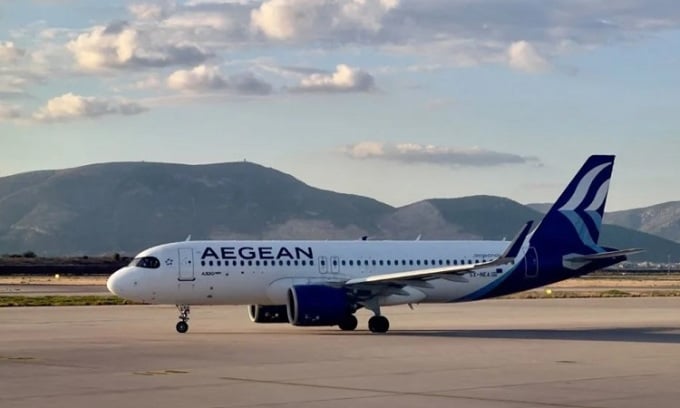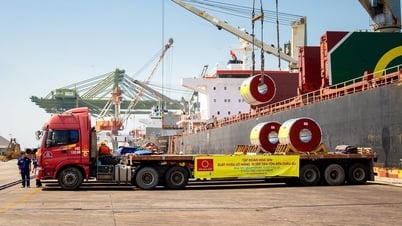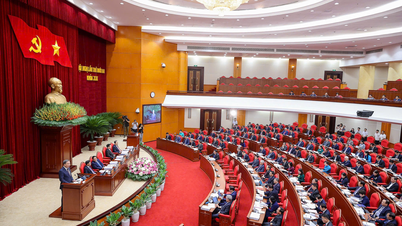Rising temperatures around the globe are making it harder for planes to take off from some airports, posing another challenge for the civil aviation industry.

Plane Airbus A320 of the airline Aegean docked at Athens International Airport in October 2022. Photo: AFP
As hot weather becomes more frequent, the problem of difficult takeoffs could increase with more flights, forcing airlines to delay or cancel flights, according to CNN .
“The fundamental challenge any aircraft faces when taking off is that the aircraft is very heavy and gravity holds it to the ground,” explains Paul Williams, professor of atmospheric science at the University of Reading in the UK. “To overcome gravity, the aircraft needs to create lift. That is, it uses air to push the aircraft up. Lift depends on a number of factors, but one of the most important is the temperature of the air. As air warms, it expands, so there are fewer molecules available to push the aircraft up.”
For every 3 degrees Celsius increase in temperature, an aircraft loses 1% of its lift, according to Williams. "That's why extreme temperatures make it harder for planes to take off. In some really extreme conditions, planes can't take off," Williams says.
The problem is particularly acute at high altitudes, where the air is naturally thinner. Short runways give planes less room to accelerate. If a plane needs 6,200 feet of runway at 20 degrees, that distance increases to 8,500 feet at 40 degrees, Williams says.
Williams and his colleagues looked at historical data from 10 airports in Greece, all of which are characterized by high summer temperatures and short runways. They found that temperatures have warmed by 0.75 degrees Celsius per decade since the 1970s. They also found that headwinds along runways have decreased by 4.3 kilometers per hour per decade. Williams said headwinds are good for takeoffs. Some evidence suggests that climate change is causing a global slowdown, making winds appear to slow down.
The team then fed the temperature and crosswind data into a machine that calculated takeoff performance for a variety of aircraft, including the Airbus A320, one of the world's most popular aircraft. "What we found was that the maximum takeoff weight dropped by 127kg per year, which is equivalent to the weight of a passenger with luggage, meaning the aircraft carried one less passenger per year," Williams said.
From its introduction in 1988 to 2017, the A320’s maximum takeoff weight dropped by more than 3,628 kg at Chios Island National Airport, the main airport in the study, which has a runway length of less than 1,500 m. London City Airport in the UK also has a runway of less than 1,500 m. During the 2018 heatwave, more than a dozen flights were forced to disembark passengers to take off safely. One flight even had to leave 20 people behind. In 2017, dozens of flights were canceled over several days at Phoenix’s Sky Harbor International Airport when temperatures reached 48.8 degrees Celsius, exceeding the maximum operating temperature for many passenger aircraft.
A study from Columbia University predicts that by 2050, a typical narrow-body aircraft like the Boeing 737 will have to increase its weight limit by 50% to 200% during the summer months at four major US airports: La Guardia, Reagan National, Denver International and Sky Harbor.
“There are a number of solutions to this problem,” Williams said. “One is to schedule departures away from the hottest part of the day, focusing more on early mornings and late evenings, a tactic that has been used in hot regions like the Middle East.”
Lighter aircraft are also less susceptible to such problems, which could spur the use of composites like carbon fiber in airframes. Meanwhile, manufacturers like Boeing are offering a modified option for some aircraft if they don’t plan to fly them at high-altitude, hotter airports. The option would provide more thrust and larger aerodynamic surfaces to compensate for the reduced lift without affecting range or passenger capacity.
Of course, a more effective solution would be to lengthen the runway, although this may not be possible at every airport. In some cases, when none of these solutions are possible, passengers will have to miss their flights. According to Williams, it is rare for people to miss flights due to extreme heat. Most aircraft never reach their maximum takeoff weight. Missed flights will mostly occur at airports with short runways, high altitudes, and in the summertime, Williams said.
An Khang (According to Yahoo )
Source link
























































































![[Infographic] In 2025, 47 products will achieve national OCOP](https://vphoto.vietnam.vn/thumb/402x226/vietnam/resource/IMAGE/2025/7/16/5d672398b0744db3ab920e05db8e5b7d)













Comment (0)